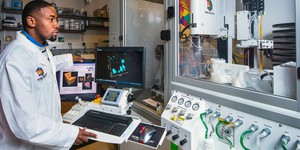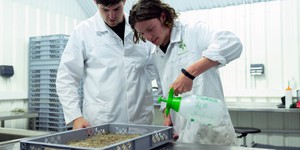Summary
Areas of Science
Difficulty
Time Required
Short (2-5 days)
Prerequisites
Access to cooking pots made of different materials.
Material Availability
Readily available
Cost
Low ($20 - $50)
Safety
Minor injury possible. Always exercise caution when using a stove. Adult supervision is required. Make sure that the cooking pots you have chosen to test are designed for stovetop use.
*Note:
For this science project you will need to develop your own experimental procedure. Use the information in the summary tab as a starting place. If you would like to discuss your ideas or need help troubleshooting, use the Ask An Expert forum. Our Experts won't do the work for you, but they will make suggestions and offer guidance if you come to them with specific questions.
If you want a Project Idea with full instructions, please pick one without an asterisk (*) at the end of the title.
If you want a Project Idea with full instructions, please pick one without an asterisk (*) at the end of the title.
Abstract
What is cooking? Cooking is applying heat to food in order to help make it taste good. But the decision to cook your food doesn't end there. Do you want to cook it at a low temperature for a long time or do you want to apply high heat and cook or sear it right away? You might think that a pot is just something in which to cook your food, but it is also a cooking tool. Pots and pans are made from different kinds of materials, such as aluminum, stainless steel, iron, and ceramics. Each of these materials transfers heat differently. In this cooking and food science fair project, you will determine which material transfers heat the fastest. Try different kinds of pots to see which kind boils water the fastest or use a kitchen thermometer to find out which delivers the highest temperature after 10 minutes. You can also test and see how long the hot water stays hot in the pot. After doing this science fair project, you'll be the expert and can help your parents make cooking decisions, like the best pot to cook stew in or the best pan in which to sear meats.Bibliography
This website gives a great tutorial on heat transfer and the different ways of transferring heat.
- Zimmerman, B. (2007, June 1). Heat Transfer and Cooking. Cooking for Engineers. Retrieved October 9, 2008.
Ask an Expert
Do you have specific questions about your science project? Our team of volunteer scientists can help. Our Experts won't do the work for you, but they will make suggestions, offer guidance, and help you troubleshoot.
Careers
If you like this project, you might enjoy exploring these related careers:
Career Profile
What makes it possible to create high-technology objects like computers and sports gear? It's the materials inside those products. Materials scientists and engineers develop materials, like metals, ceramics, polymers, and composites, that other engineers need for their designs. Materials scientists and engineers think atomically (meaning they understand things at the nanoscale level), but they design microscopically (at the level of a microscope), and their materials are used macroscopically…
Read more
Career Profile
There is a fraction of the world's population that doesn't have enough to eat or doesn't have access to food that is nutritionally rich. Food scientists or technologists work to find new sources of food that have the right nutrition levels and that are safe for human consumption. In fact, our nation's food supply depends on food scientists and technologists that test and develop foods that meet and exceed government food safety standards. If you are interested in combining biology, chemistry,…
Read more
Career Profile
Good taste, texture, quality, and safety are all very important in the food industry. Food science technicians test and catalog the physical and chemical properties of food to help ensure these aspects.
Read more
Related Links
Cite This Page
General citation information is provided here. Be sure to check the formatting, including capitalization, for the method you are using and update your citation, as needed.MLA Style
Science Buddies Staff.
"Hot Pot: Choosing the Right Pot in Which to Cook Your Meals." Science Buddies,
23 June 2020,
https://www.sciencebuddies.org/science-fair-projects/project-ideas/FoodSci_p031/cooking-food-science/choosing-the-right-pot.
Accessed 28 Apr. 2024.
APA Style
Science Buddies Staff.
(2020, June 23).
Hot Pot: Choosing the Right Pot in Which to Cook Your Meals.
Retrieved from
https://www.sciencebuddies.org/science-fair-projects/project-ideas/FoodSci_p031/cooking-food-science/choosing-the-right-pot
Last edit date: 2020-06-23
Explore Our Science Videos
Candy Chromatography: What Colors Are in Your Candy? | Science Project
DIY Glitter Surprise Package with a Simple Circuit
Paper Marbling – STEM Activity









